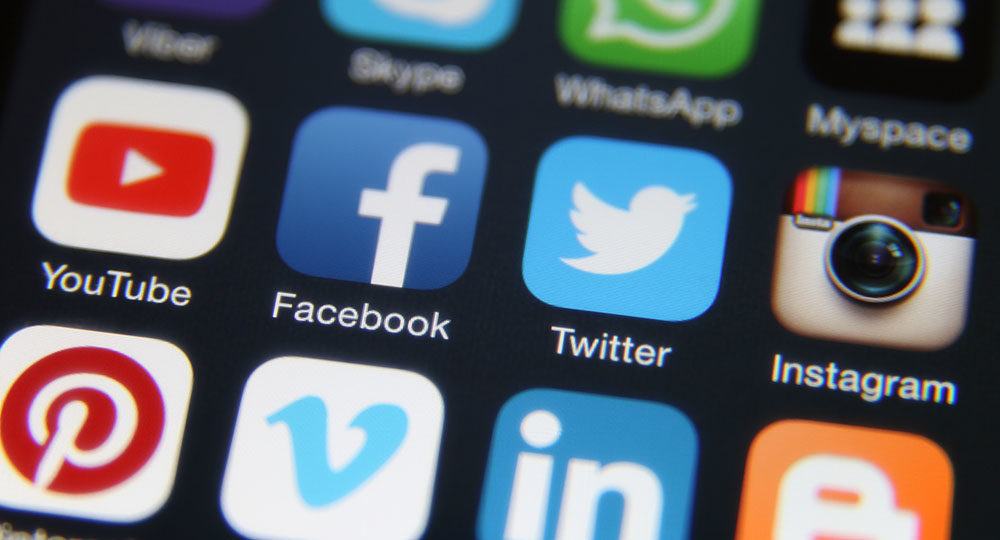The New Titans
A look at three of the most influential social-media networks in the world
It rarely snows in Washington, DC. So when the big North American blizzard known as Snowmageddon dumped more than two feet of snow in the U.S. capital in February 2010, shutting down the federal government for an unprecedented four days, Michael Lipin and Ami Greener decided it was a good time for a snowball fight.
Using Facebook and Twitter, they spread the word. In two days, their Facebook group skyrocketed from 33 members to 5,000;1 and on February 6, approximately 2,000 people descended on Dupont Circle for a snowball-fight extravaganza.2
They now have 8,000 followers, which may seem like a lot. But it’s a drop in the bucket, considering 2 billion people actively use Facebook each month—more than one quarter of the world population. Facebook dramatically eclipses all other social media. Two other extremely popular platforms are Twitter, with 330 million monthly users, and Instagram (owned by Facebook), with 800 million.
Like it or not, social networks are the new titans, and they are here to stay. Some call them the Devil’s playground. Others find them places to share their lives with friends and family. No matter how we look at them, they have become a force to be reckoned with—a powerful and effective form of worldwide, electronic communication.
Big Numbers
It is estimated that more than 78 percent of the U.S. population has at least one social-network profile.3
There are days I wish social media did not exist. They can be time-wasters and downright discouraging. But they can also be helpful, comforting, and supportive. For instance, I was able to raise money for our son’s adoption through social media from people I’m connected to all over the world.
Social networking is having coffee with friends who live far away or watching a video with your grandson on the other side of the globe. According to a report from Small Business Trends, around 2.67 billion people use social media—more than eight times the entire U.S. population.
Social media also involve big money. From 2014 to 2016, advertising revenue grew from $16 billion to $31 billion; and in 2016, 60 million businesses had a Facebook presence.4
The smartphone’s growing popularity has forced social media platforms to adapt to them. Approximately 80 percent of all social-media use occurs on cell phones.5 In fact, some platforms cannot be used on anything but a smartphone.
I use Facebook, Instagram, and Twitter almost every day; and The Friends of Israel is active on all three sites. Each one is different and attracts a different crowd.
Facebook
Facebook was created in 2004 by Mark Zuckerberg and his roommates on the Harvard University campus as a way for Harvard students to connect. Eventually, it expanded to embrace everyone, and in 2012 Facebook became a publicly traded company on the New York Stock Exchange.
In less than 15 years, the site grew from 1 million active users to 2 billion. Most people use Facebook to see what others are doing. They share photos and videos (both personal and
from sites like YouTube) and update their status to tell their friends what they are thinking, doing, or feeling. Privacy settings enable individuals to choose who can see their updates and activity.
Ten percent more women than men use Facebook, and Generation Xers (ages 36 to 49) use it the most. Statistics show that 80 percent of all GenXers have a Facebook account, as do 70 percent of people ages 20 to 35, 60 percent of people ages 50 to 65, and 45 percent of people 65 and older. Only 26 percent of people 13 to 19 use Facebook.6
Interestingly, Facebook announced in December it was creating a kids messenger app that purports to be a safe environment parents can easily oversee. Evidently, Facebook is trying to attract younger people to secure its future viability.
The Friends of Israel Gospel Ministry posts daily on Facebook. Our page provides inspirational Scripture, links to articles featured in Israel My Glory, informative videos produced at our headquarters, and a list of our Bible and prophecy events.
Approximately 38,000 people have “liked” or decided to receive FOI’s Facebook content; and many have shared it with friends, introducing them to our ministry.
Instagram
Instagram is a photo- and video-sharing social-media platform that launched in 2010. Eighteen months later, its creators sold it to Facebook for $1 billion.
FOIGM INSTAGRAM PAGE
Look us up on Instagram on The Friends of Israel Gospel Ministry Instagram Page.
However, unlike Facebook, users can only place content on Instagram with a mobile device containing a camera, such as a cell phone or iPad. But they can view content using a desktop or laptop. Users follow friends, businesses, and celebrities, much as they do on Facebook. Scrolling through Instagram opens up a worldwide picture album of families, food, and activities.
Instagram is most popular among teenagers and millennials. More than 50 percent of all 18- to 29-year-olds in the United States use this platform.
In 2016 Instagram added Instagram stories, letting people post content that vanishes after 24 hours. Users can watch videos and view photos as many times as they wish in 24 hours, then the material disappears.
If you have children or grandchildren on Instagram and own a smartphone, I would recommend joining Instagram and following them. Studies have shown that many young people on social media, especially Instagram, tend to battle depression.7 Talking with your children and grandchildren about what they post and who they follow can be a wonderful teaching tool.
Twitter
In 2006 a group of young web developers created Twitter, a mobile and desktop-friendly social-media platform. For years each post, status update, or tweet (as most people call them) was limited to 140 characters—including letters, spaces, and punctuation. In November, Twitter expanded the number to 280.
Seventy-nine percent of Twitter’s users live outside the United States. Millennials use Twitter the most. Many people use it to interact with businesses and to keep up with breaking news, which appears almost instantly on their mobile phones.
For example, after a terrorist attack in a Tel Aviv market in 2016 that left four people dead and 16 wounded, CNN put the word terrorists in quotation marks on its Facebook page and refused to acknowledge the attack as terrorism, provoking outrage, according to The Jerusalem Post. It then used Twitter to issue a quick apology.8
The Friends of Israel has more than 1,400 followers on Twitter and regularly tweets a link to “The Friends of Israel Today” radio program, where people can listen directly on Twitter. We also tweet when major news breaks in Israel and when we have produced new informational videos.
Social networks can be the Devil’s playground. But they are also wonderful places to connect with others, grow in our faith, teach our children balance, and keep in touch with friends around the globe.
Today snowball-fight aficionados Michael Lipin and Ami Greener keep their followers informed via their Washington DC Snowball Fight Association Facebook page, providing photos and videos and tracking the weather to determine the best time and place to hold what has become a much-anticipated, annual snowball event.
At The Friends of Israel, our media team continues to post informative videos, articles, blogs, and Scripture that will strengthen our social-media community and teach biblical truth about Israel and the Messiah, while fostering solidarity with the Jewish people.
ENDNOTES
-
-
- Amy Gardner, “2,000 join in snowball fight at Dupont Circle in D.C.” The Washington Post, February 7, 2010 (goo.gl/V9rQfS).
- Ibid.
- Shubhomita Bose, “Surprising Stats on Every Generation’s Social Media Habits,” Small Business Trends, March 8, 2017 (goo.gl/aWLGn3).
- Ibid.
- Jay Shemenski, “The Future of Social Media is Mobile – Are You Ready?” socialmediatoday.com, July 26, 2016 (goo.gl/3gDT7H).
- Bose.
- Karen Gilchrist, “Instagram most likely to cause young people to feel depressed and lonely out of major social apps, study says,” CNBC, May 19, 2017 (goo.gl/D4rSCf).
- “Top 5 most egregious anti-Israel headlines in the international media,” The Jerusalem Post, August 17, 2016 (goo.gl/NBCBgK).
-








